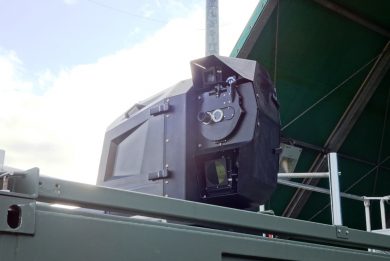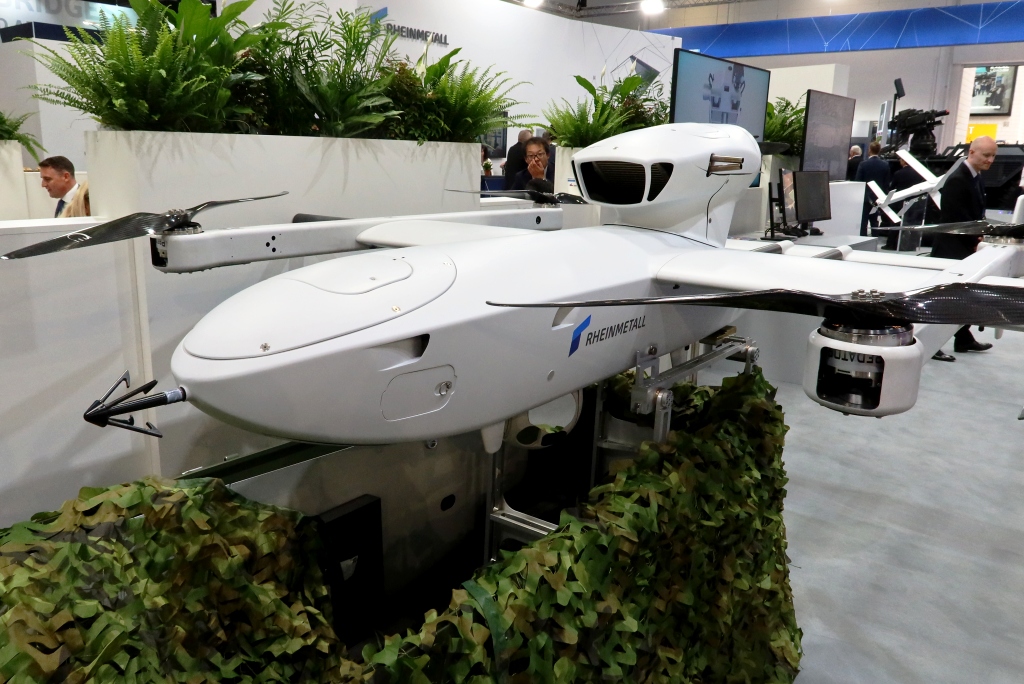
DSEI 2023 – Rheinmetall Luna NG debuts in its final configuration
The acquisition in 2020 of EMT Ingenieurgesellschaft Dipl.-Ing. Hartmut Euer mbH , a Bavarian company specialised in unmanned air vehicles, marked the come-back of the Düsseldorf-based Group in the UAS arena. At Eurosatory 2022 a scaled-down model of the LUNA NG, for Next Generation was shown, however the real size mock-up exhibited at DSEI 2023 allowed to witness what the system that will soon be delivered to the German Army looks like
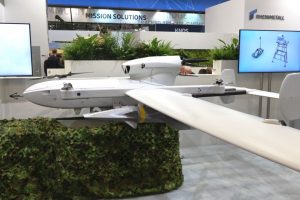
Or in fact no! The one shown at Excel was fitted with the vertical take-off and landing (VTOL) attachment, while EDR On-Line understood that the Bundeswehr, at least for the moment, will receive standard fixed wing airframes. The Luna NG is bigger and heavier compared to its predecessor, the Luna, which has been in service for over two decades with the German Army and is also in service in Pakistan; while the original Luna had a maximum take-off mass of less than 40 kg, the Luna NG takes off at 110 kg and has an endurance of around 12 hours, the double f the smaller airframe. The digital data-link adopted provides a 100-150 km range. In the conventional fixed wing configuration it has a 5.34 metres wingspan (versus 4.17 metres) and is 3.17 metres long (versus 2.36 metres).
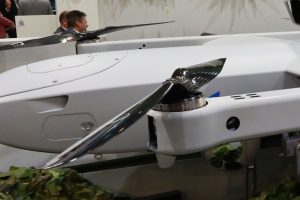
What emerged at DSEI is that the VTOL kit is not installed over or under the wings, as in many other systems; the kit is made of a short wing extension and the boom hosting the two rotors, each driven by an electric motors powered by batteries, also hosted in the boom as well as the Electronic Speed Controller. The wing extension is installed between the fuselage and the actual wing used in the conventional fixed wing configuration, extending therefore the wingspan to 6.68 metres. The inner wing element is needed to ensure the standoff between the fuselage and the rotors. The kit contains all what is needed to convert the Luna into a VTOL airframe, a software upgrade being needed to the base configuration to allow conversion.
A skid-type landing gear is also added to the airframe for take-off and landing, while the fixed-wing Lune NG takes off from a catapult and is recovered by net. EDR On-Line understood that the Bundeswehr required a landing system similar to that of the in-service Luna, based on parachute and air bags, as it probably wants to maintain the advantage of operations commonality with the existing system.
In the VTOL configuration the Luna NG has a take-off mass of 130 kg, its payload is reduced from 30 to 20 kg, and the endurance is of 9-10 hours; however the flexibility of the VTOL solution compensates well these drawbacks.
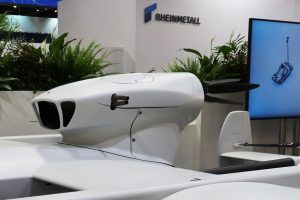
Compared to the model seen one year ago in Paris, the engine is back again in a sponson over the fuselage and not anymore at the back of the fuselage, the current heavy fuel Wankel rotary engine with injection, liquid-cooled, starter/generator, provides 11 kW and drives a two-blade pushing propeller, the original Luna having a 5 kW heavy fuel engine.
The Luna NG is fitted with two tubular spas that carry at the far end the horizontal stabilator with two vertical fins at teach end. The Next Generation airframe has a maximum speed of 130 km/h and a reconnaissance speed of 90 km/h, the Luna having a similar cruise speed. Service ceiling is over 5,000 metres.
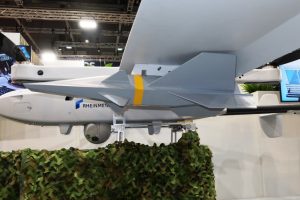
Considered a small tactical UAS, the Luna NG can be used not only for reconnaissance, surveillance and targeting missions, and can be employed as a multipurpose asset. The airframe was designed to accept nmodular payloads, the integrated electro-optic gimbal being under the fuselage slightly ahead of the wing. Among the other various payloads the Luna NG can be fitted with communications relay, including 4G LTE network, IMEI (International Mobile Equipment Identity) tracker allowing to follow a person using a specific telephone, ESM (Electronic Support Measures) equipment, AI supported data evaluation systems, and more. At DSEI 2023 the airfrane carried under the left wing the mock-up of the RDB10. This acronym indicates the Rheinmetall Gliding Bomb 10, the number referring to its mass, 10 kg. The RDB10 is a company-funded programme and Rheinmetall is looking for European Defence Funds to fully develop the system. The company is developing the warhead and the baseline navigation kit, the airframe being quite angled, probably for stealthness, and is fitted with short wings, Rheinmetall declaring a 5-10 km range without providing the release altitude. A scale model is scheduled to fly in 2024.
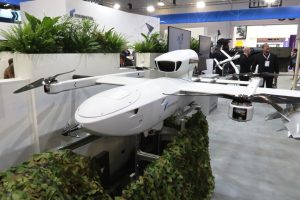
Back to the Luna NG, the contract filed by the Bundeswehr and approved by the Parliament in 2020 is about to come to fruition, delivery of one pre-production system being planned shortly, certainly before year end. The next step will be the launch of full production, the military having required 13 complete systems, each including five airframes, first deliveries of serial production Luna NGs being planned in 2025.
As anticipated, the Army has not (yet?) considered the VTOL configuration. However the German Navy has shown some interest for this version as it would be operable from ships’ landing decks. No firm document have been yet signed, however a demonstration was carried out by EMT in 2018; in spring 2023 the project was revived and Rheinmetall is now working on the configuration in cooperation with startups and academia, the aim being to have a product ready around 2027-28.
Photos courtesy P. Valpolini


